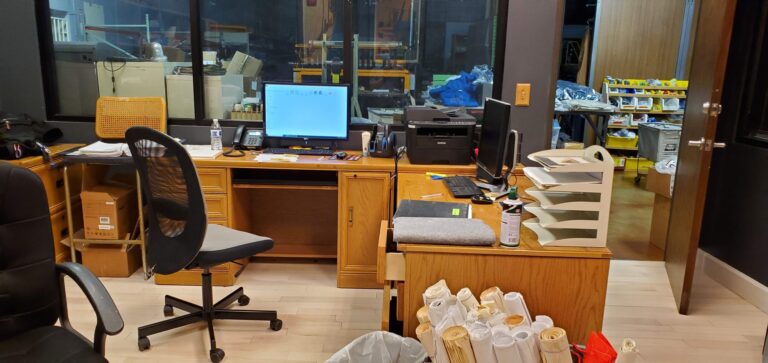My Journey at Fire Protection Outfitters
Location: Pasadena, TX
In August 2020, I joined Fire Protection Outfitters as the General Manager, IT Specialist, and Technical Troubleshooter.
The company operates a manufacturing facility specializing in protective clothing for construction and oil industry workers. The garments are made from fire-resistant and heat-resistant fabrics to ensure safety in hazardous environments.
The production space was large, housing office sections, a pattern-cutting area, dozens of industrial sewing machines, and button-stamping equipment. My workspace was located in the back, providing a clear view of the entire production process—from material intake and storage to cutting, sewing, and final assembly.


To fulfill my role effectively, I had to understand every stage of production, including material procurement, pattern-making, sewing, button installation, embroidery, packaging, retail, and shipping.
Upon receiving my company-assigned PC, I quickly realized it was outdated, sluggish, and frequently froze while running QuickBooks, a software that demands high virtual memory (RAM) and strong internet connectivity for data transfers. To resolve the issue, I decided to reinstall the system. This computer also served as the company’s main server, so improving its performance was critical. Within a week, the system ran more smoothly. However, syncing it with other computers became my next challenge. I took it upon myself to clean up and upgrade the other computers as well. Scouring through storage, I searched for compatible RAM and graphic cards to enhance performance and reinstalled the entire system for the sales team, administrative staff, and even the owner’s computer.
Alongside IT upgrades, I was trained on RHINO software to create digital patterns, export files for the cutting machine, load fabric, align materials using infrared positioning, and run the cutting program. Thankfully, I wasn’t required to sew, but I did have to learn embroidery—loading logo files, securing garments into frames, setting thread colors, adjusting stitch counts, and running the machine.
Additionally, I familiarized myself with the company’s unique sizing system, packaging process, and FedEx shipping procedures. This included entering customer information, weight, pricing, delivery details, sending confirmation emails, and coordinating with clients.
I also took on the task of redesigning the company’s branding, including signage and internal forms, ensuring consistency throughout all materials. The owner was very pleased with the improvements. Every Monday, I attended management meetings to provide reports and propose new ideas.
Occasionally, I had to troubleshoot unexpected issues such as broken exhaust fans, malfunctioning lights, unresponsive printers, or a cutting machine that wouldn’t operate. In such cases, I contacted manufacturers for replacement parts and handled repairs when feasible.
Understanding the workflow was essential, so I engaged with employees individually, learning their roles and documenting procedures for future training. Managing long-time employees—some with over 30 years of tenure—was initially challenging due to resistance to change. However, over time, they saw that my efforts were aimed at improving efficiency and making their work easier.
The turning point came when, on my birthday, the team surprised me with a cake and home-cooked dishes prepared by their families. It was a heartfelt moment that made me feel truly accepted as part of the team. I remain grateful for my time there and continue to wish the company and its employees success, health, and happiness.










